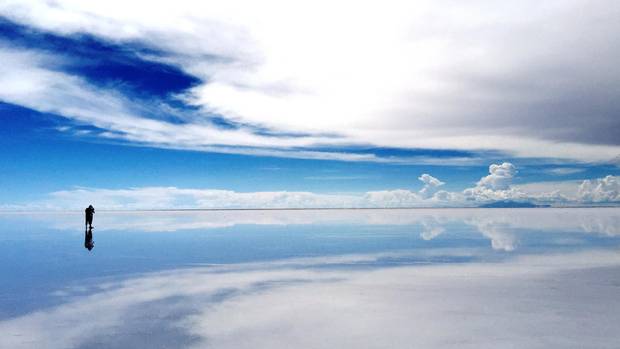"Where IS this?"
This comment accompanies many of the 156 million-plus Instagram posts that use the #travel hashtag. Indeed, as this is being written, two-thirds of the nine "top posts" featured on the photo-sharing platform reveal next to nothing about where or how the images were captured, let alone how to visit the locations in person.
This must frustrate the millions of Instagrammers who "like" an image so much that they long to explore its setting (and snap a similar pic). This is a lot of travellers: In a 2016 survey by San Francisco-based Ask Your Target Market, 64 per cent of respondents who view travel photos on Instagram said that seeing posts about a specific destination can make them want to visit it.
Of course, these settings are often obvious: A snap of the Eiffel Tower using only the #ParisLove hashtag requires no elaboration – been there, done that – while a photo of the Taj Mahal, simply tagged #EternalLove, can feel more cloying than compelling.
But what about those Instagram staples that aren't quite as famous and accessible? Thanks to your feed, you may have already admired the five spots featured here. Now, it's time to fill in the blanks.
Trolltunga, Norway
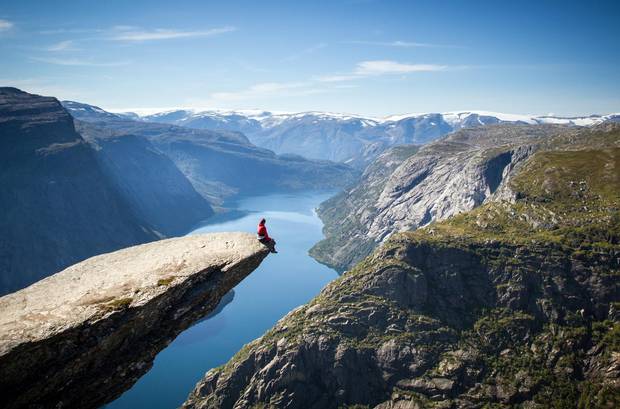
The 11-kilometre hike up to ‘Troll’s Tongue’ cliff near Trolltunga, Norway, is only available certain times of the year, but gives travellers a chance at an Insta-shot for the ages.
Getty Images/iStockphoto
Lowdown: The evocatively-named "Troll's Tongue" is a mainstay on "world's best selfie" lists for good reason. Jutting dramatically from a sheer cliff face more than 700 metres above Lake Ringedalsvatnet, the locomotive-sized granite outcrop provides a prime setting for daring-looking snapshots. It's no coincidence that the site's popularity has exploded alongside Instagram's, with annual visits soaring from 500 in 2009 to 40,000 just five years later.
Getting there: A strenuous 11-kilometre hike from the village of Skjeggedal follows the three-hour drive from Bergen's international airport. Tour companies, such as Trolltunga Active, offer guided hiking, climbing and mountain-biking packages out of the nearby town of Odda, where many visitors spend the night before setting out on the eight- to 10-hour round-trip trek that should be started no later than 10 a.m. The main trail is closed from Oct. 16 to March 18 owing to unsafe conditions, with a guide required after Sept. 15.
The shot: Clifftops conveniently overlook Trolltunga, allowing subjects to pose on the slab while their companions or guides size up shots. In the summer, however, you may have to wait your turn for a solo selfie.
Bagan, Myanmar
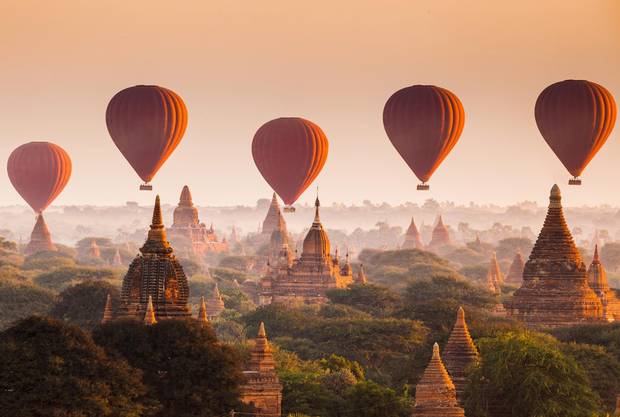
Bagan, Myanmar’s 11th century archaeological zone of more than 2,000 ancient pagodas gives rise to an iconic photo opportunity when hot-air balloons provide wide-angle views of its flat plain.
lkunl/Getty Images/iStockphoto
Lowdown: Southeast Asia's other gargantuan archeological site is not as famous or as crowded (and Instagrammed) as Cambodia's Angkor … and that's part of its appeal. The 1,000-year-old city is similarly impressive and photogenic, however, with the 2,200-plus temples, pagodas and stupas comprising the largest and densest concentration of Buddhist ruins in the world.
Getting there: The nearby Nyaung U airport is well-connected to Myanmar's main international air hubs in Yangon and Mandalay. Trains and buses run daily from both cities, while ferries chug slowly down the scenic Irrawaddy River from the latter. Accommodations of all stripes surround the ancient complex, with guided and self-guided tour options ranging from horse-drawn carts and hired taxis to rented e-bikes and hot-air balloon rides.
The shot: With the Bagan archeological zone spanning 104 square kilometres, hot-air balloons provide pleasing wide-angle views of its flat namesake plain. The colourful aircraft also contrast beautifully with the earthtones of the dusty landscape and the crumbling cityscape below.
Salar de Uyuni, Bolivia
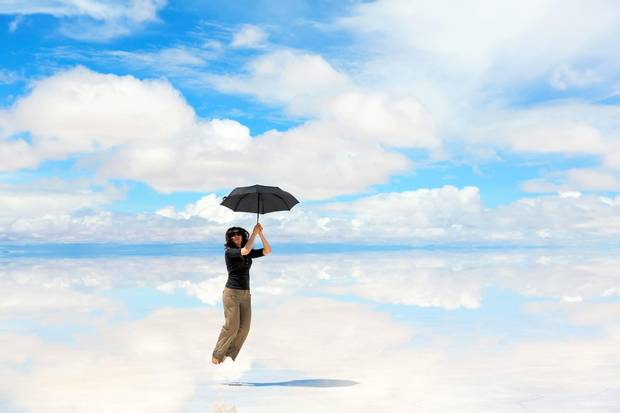
Wet winter conditions at Salar de Uyuni, Bolivia turn the world’s largest salt flat into a giant mirror, allowing for some enviably Instagrammable moments.
Dmitriy Burlakov/Getty Images/iStockphoto
Lowdown: Earth's largest saltwater flat is also one of its flattest landscapes, with variations in altitude averaging less than one metre across the Jamaica-sized expanse.
When it rains, the gleaming salt crust is transformed into the planet's largest mirror, which yields striking reflections of the sky, the surrounding desert mountains, and the surreal volcanic islands that dot the flats.
This also creates the illusion that visitors are walking, cycling or driving on the surface of a lake. Does Instagram click-bait get any better than that?
Getting there: The town of Uyuni, a seven-hour drive or 45-minute flight south of La Paz, is the usual starting point for guided one- to five-day tours that typically include a train graveyard, various salt-mining facilities, chinchilla and flamingo colonies, and a wide range of geothermal and geological oddities. If you prefer to explore solo, there's nothing stopping you from driving or even taking a local bus to the nearby village of Colchani, which is within easy walking distance of the flats (if not many of the aforementioned attractions).
The shot: The summer rainy season, from December through February, is really the only time to witness the watery reflections. Winter, on the other hand, is bone dry and can be bone-chillingly windy and cold.
Manarola, Italy
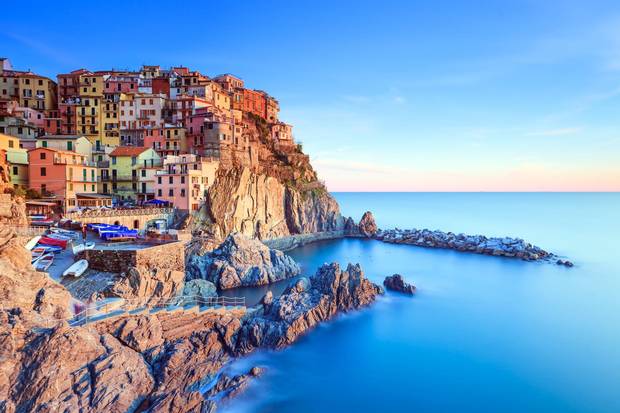
Manarola village in Italy’s Cinque Terre National Park is probably one of the most Photoshopped places on Earth.
StevanZZ/Getty Images/iStockphoto
Lowdown: The most photogenic of the five outrageously pretty seaside villages in Cinque Terre National Park is probably one of the most Photoshopped places on Earth. Manarola's homes, hotels, churches and restaurants really do cascade exquisitely down terraced hillsides toward the Ligurian Sea – making it a worthy inclusion on this list – but their pastel paint jobs are prone to digital enhancement. Talk about #FakeHues!
Getting there: Frequent train service out of nearby La Spezia is the best option for visiting all the Cinque Terre villages, what with the steep, narrow roads and lack of parking. A passenger ferry runs between them, as does a network of coastal walking paths. Be aware, however, that recent rock slides have closed some sections of trail.
The shot: The paved waterfront path just north of Manarola provides access to an iconic camera angle that gets even better when the rosy glow of sunset strikes the village. Photoshop schmotoshop!
Seljalandsfoss, Iceland
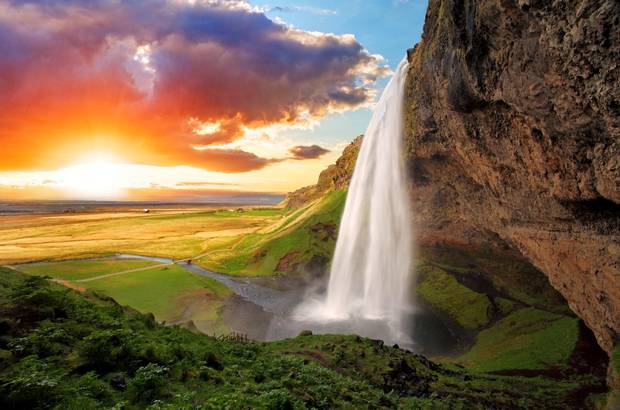
Seljalandsfoss, Iceland’s Eyjafjallajokull volcano provides photographers with a chance to shoot behind it’s waterfall.
Tomas Sereda/Getty Images/iStockphoto
Lowdown: If you're going to post a photo of a sunset, rainbow or waterfall it had better be eye-catching – the competition is fierce, after all. That's not a problem on a visit to Seljalandsfoss, which not only cascades dramatically down the western slopes of the ice-capped Eyjafjallajokull volcano, but is also backed by a wide cleft that lets visitors walk behind the 60-metre high veil of water.
Getting there: Drive about 90 minutes west of Reykjavik on Route 1, look to your left, and you'll soon spot the waterfall just north of the main road. There's plenty of parking, and a well-worn path leads right to the foot of the falls. This 100-metre stroll is doable in flip-flops, but be sure to wear sturdier footwear for the walk behind the falls, as the rocks can be slippery.
The shot: This one is pretty self-explanatory, although there are two Instagram-related points to consider: One, a summer visit increases the likelihood of direct sunlight striking the falls – cue the "likes" – and two, a waterproof camera cover will help prevent voided warranty claims.
Has a stunning destination on Instagram caught your eye? Let us know which places and sights you would like to learn more about by e-mailing travel@globeandmail.com with "instagram" as the subject line.
